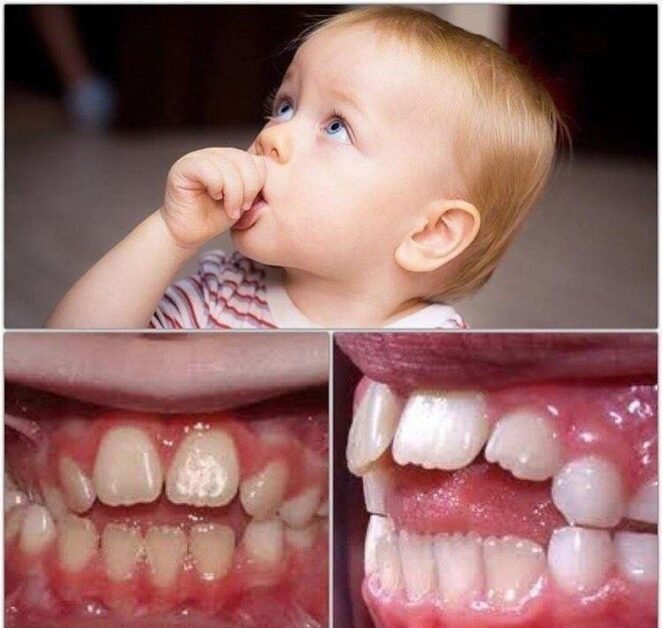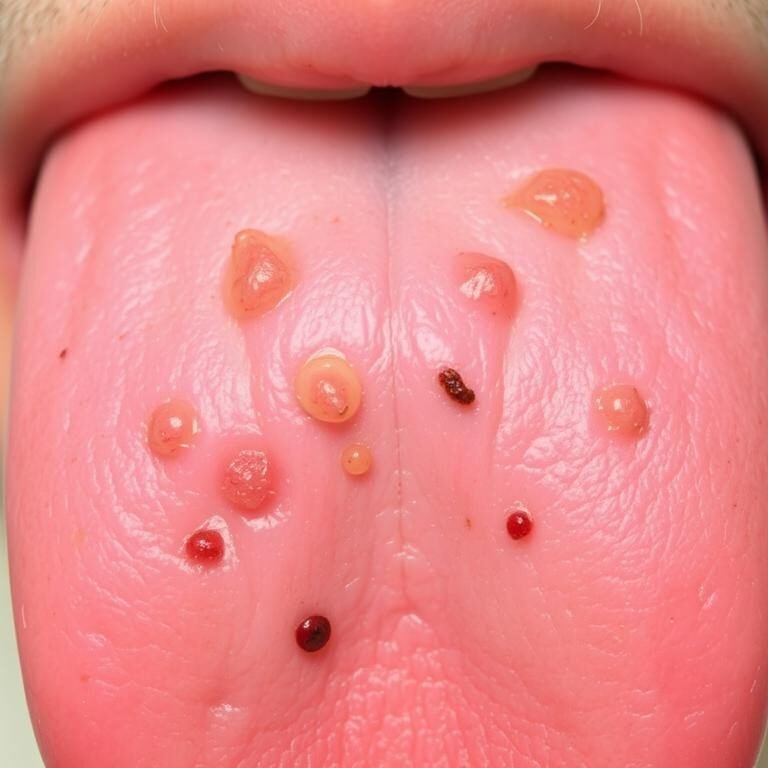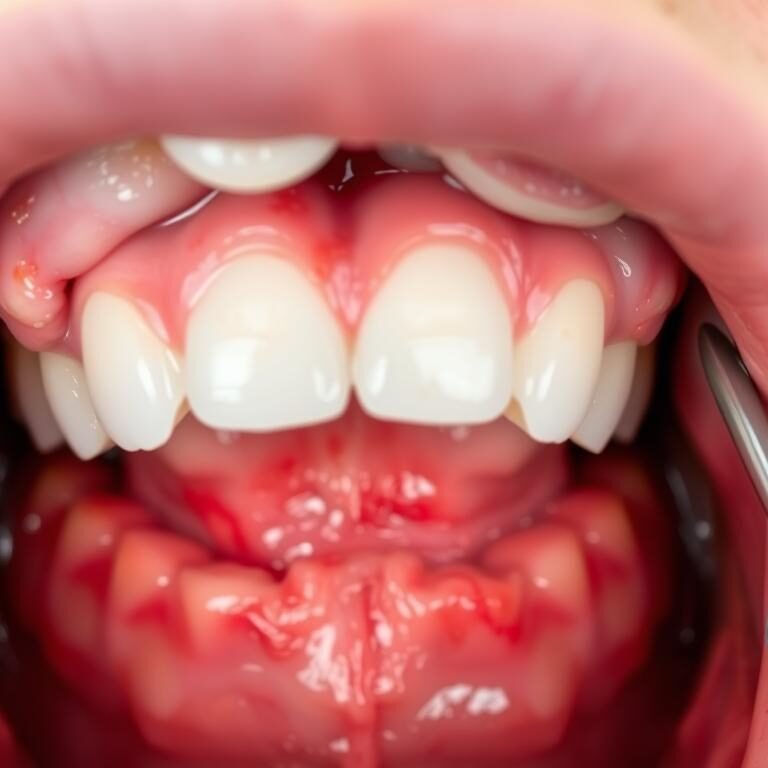Table of Contents
Recognizing the signs of thumb sucking in children
Thumb sucking is a common behavior observed in many children, particularly in their early years. While this habit is usually harmless and temporary, it is important for parents and caregivers to recognize the signs and take appropriate action to prevent any potential dental issues. One of the primary signs of thumb sucking is the constant presence of the thumb in the child’s mouth. This can be observed during various activities such as sleeping, resting, or even while playing.
Additionally, children who engage in thumb sucking may develop a calloused or reddened skin around the thumb due to constant friction. It is also worth noting that prolonged thumb sucking can lead to misalignment of teeth, pronounced overbite or underbite, and potential speech issues. By recognizing these signs, parents can take proactive measures to address this habit and promote optimal dental health for their child.

Exploring the reasons behind thumb sucking behavior
Thumb sucking is a common behavior observed in many children, particularly in their early years of life. As a dentist with expertise in pediatric dentistry, it is crucial to explore the reasons behind thumb sucking behavior, as it can have long-term implications for a child’s oral health and development.
One possible reason behind thumb sucking is the instinctive need for comfort and self-soothing. Babies often suck their thumbs as a means of calming themselves, especially when they are feeling anxious, tired, or overwhelmed. This behavior is instinctual and provides a sense of security and relaxation for them. However, prolonged thumb sucking can have detrimental effects on dental health, which we will discuss in detail in a subsequent section.
Another contributing factor to thumb sucking behavior can be observed in children who have difficulty transitioning from bottle feeding or breastfeeding. These children may develop a habit of thumb sucking as a substitute for the soothing and rhythmic sucking they experienced during feeding. It is important to understand that thumb sucking is a natural behavior for infants, but it becomes a concern when it persists beyond a certain age and starts to affect oral health. Understanding the reasons behind thumb sucking behavior can help parents and caregivers approach the issue with empathy and develop effective strategies to address this habit.
The impact of thumb sucking on dental health
Thumb sucking is a common habit among children that can have a significant impact on their dental health. The constant pressure and suction from thumb sucking can lead to a variety of oral issues, including misalignment of the teeth and improper growth of the jaw. Over time, prolonged thumb sucking can cause the upper front teeth to tilt forward, creating an open bite or an overbite.
According to research, thumb sucking can also contribute to changes in the shape of the roof of the mouth, leading to a more narrow and high-arched palate. This can affect speech development and increase the risk of dental problems, such as crossbites and crowded teeth, later in life. Therefore, it is crucial for parents to understand the potential consequences of thumb sucking and take proactive measures to address this habit in a timely manner.
Proper dental health not only ensures a beautiful smile, but also contributes to overall well-being. By recognizing the impact of thumb sucking on dental health and seeking appropriate interventions, parents can help their children achieve optimal oral development and prevent potential long-term issues. The next section will delve into effective strategies for addressing thumb sucking with empathy and understanding, offering valuable insights on how to support children in breaking this habit.

Addressing thumb sucking with empathy and understanding
Thumb sucking is a common habit among children that can be both soothing and comforting. However, it is important for parents and caregivers to address this behavior with empathy and understanding. Rather than shaming or scolding the child, it is crucial to approach the issue with a supportive attitude. By doing so, we can help children feel safe and secure as we guide them towards breaking the thumb sucking habit.
One way to address thumb sucking with empathy is by explaining the potential negative impact on dental health. Gently educate the child about how prolonged thumb sucking can affect the alignment of their teeth and the development of their jaw. Provide reassurance that you understand how difficult it can be to stop this habit, but emphasize the benefits of breaking it early. Encourage them to be an active participant in their oral health and express your willingness to support them every step of the way. By approaching the issue with understanding, we can create an environment that encourages open communication and cooperation.
Creating a supportive environment to break the thumb sucking habit
Creating a supportive environment is crucial when it comes to breaking the thumb sucking habit in children. It is important for parents and caregivers to understand that thumb sucking is a natural instinct for infants and young children, as it provides a sense of comfort and security. However, when it becomes a persistent habit, it can have negative effects on dental health and oral development.
To create this supportive environment, it is essential to approach the issue with empathy and understanding. Instead of resorting to punitive measures or shaming the child, it is more effective to educate them about the potential consequences of thumb sucking and involve them in the process of breaking the habit. Encouraging open communication and active listening can help the child feel validated and supported throughout their journey.
Furthermore, creating a consistent routine can be helpful in discouraging thumb sucking. Establishing a set of rules and reminders can serve as gentle prompts to remind the child to avoid thumb sucking. This routine can include activities that occupy the child’s hands and curiosity, such as engaging them in games, puzzles, or hobbies that keep their hands and mind busy. By incorporating positive alternatives, redirection techniques, and gentle reminders, parents can gradually help their child develop healthier habits and overcome thumb sucking.

Encouraging positive alternatives to thumb sucking
Thumb sucking is a common behavior among young children, and while it can provide comfort and reassurance, prolonged thumb sucking can have negative effects on dental health. Encouraging positive alternatives to thumb sucking can help redirect this behavior and promote healthier habits.
One effective alternative is providing a suitable replacement, such as a favorite stuffed animal or blanket, that can serve as a source of comfort and security. This not only satisfies the child’s need for self-soothing but also helps to redirect their attention away from thumb sucking. Additionally, providing age-appropriate toys, activities, and games can further engage the child and distract them from the habit.
Another strategy is to engage the child in activities that require the use of their hands, such as puzzles, coloring, or building blocks. By keeping their hands busy, the child is less likely to resort to thumb sucking as a means of comfort or entertainment. It is important to choose activities that the child enjoys and finds engaging, as this will increase the likelihood of them choosing these alternatives over thumb sucking.
By implementing these positive alternatives to thumb sucking, parents and caregivers can help their child break the habit and promote healthier oral habits. However, it is important to approach this process with empathy and understanding, as breaking any habit can be challenging for a child.
Implementing gentle reminders and redirection techniques
Thumb sucking is a common behavior observed in many children, and implementing gentle reminders and redirection techniques can be an effective way to address this habit. By using these techniques, parents and caregivers can help their child become aware of their thumb sucking behavior and guide them towards more appropriate alternatives.
One approach is to gently remind the child whenever they start sucking their thumb. This can be done in a calm and non-confrontational manner, using phrases like, “Remember, we don’t suck our thumbs,” or “Let’s try using a different way to comfort ourselves.” By consistently offering these reminders, children can gradually develop an awareness of their thumb sucking habit and begin to self-regulate.
Redirection techniques can also be useful in helping children find alternative ways to comfort themselves. Offering a soothing object, such as a plush toy or blanket, can provide a sense of security and comfort. Engaging the child in activities that occupy their hands, such as drawing, playing with toys, or doing puzzles, can distract them from thumb sucking. By redirecting their attention and providing alternative sensory experiences, parents can help their child break the habit of thumb sucking in a gentle and supportive manner.
Implementing gentle reminders and redirection techniques require patience and consistency. It is important for parents and caregivers to create a positive and supportive environment, where the child feels understood and encouraged. By approaching the issue with empathy and understanding, and consistently reinforcing the message that thumb sucking is not the desired behavior, parents can help their child overcome this habit and promote their overall dental health.
Establishing a consistent routine to discourage thumb sucking
Thumb sucking is a common habit in children, but implementing a consistent routine can help discourage this behavior. It is important to establish clear expectations and boundaries around thumb sucking, creating a routine that focuses on positive reinforcement and redirection. Consistency is key, as children thrive on structure and knowing what to expect.
One effective strategy is to create a visual schedule or chart that outlines the daily routine. This can serve as a helpful reminder for both the child and the parent, ensuring that thumb sucking is addressed at specific times and in specific situations. For example, parents can designate certain activities or times of day when thumb sucking is not allowed, such as during meal times or when engaging in play activities.
Additionally, it can be helpful to provide alternative activities or distractions to occupy the child’s hands and mouth. This can include giving them a favorite toy or object to hold, engaging them in interactive play, or offering healthy snacks to chew on. By redirecting their attention and providing positive alternatives, children can gradually learn to replace thumb sucking with more appropriate behaviors.
By implementing a consistent routine, parents can effectively discourage thumb sucking in their children. This approach provides structure, clear expectations, and positive reinforcement, all of which contribute to breaking the habit. Stay tuned to the next section to explore the use of thumb guards or gloves as a potential tool in addressing thumb sucking.
Exploring the use of thumb guards or gloves
Thumb guards or gloves have been found to be an effective tool in addressing the habit of thumb sucking in children. These devices provide a physical barrier that prevents the child from placing their thumb in their mouth, thereby discouraging the behavior.
Thumb guards or gloves are typically made from soft, flexible material that is comfortable for the child to wear. They are designed to fit securely over the thumb, ensuring that the child cannot easily remove it or manipulate it to continue sucking. Some thumb guards or gloves even come with adjustable straps or closures to provide a customizable fit for different thumb sizes.
By using thumb guards or gloves, parents can provide a gentle reminder to their child whenever they attempt to suck their thumb. This can help the child become more aware of their habit and break the cycle of thumb sucking. It is important to note that thumb guards or gloves should be used as a supportive tool alongside other techniques, such as positive reinforcement and creating a supportive environment, to effectively address the thumb sucking habit.

Seeking professional advice from a pediatrician or dentist
Seeking professional advice from a pediatrician or dentist is crucial when it comes to addressing the issue of thumb sucking in children. These healthcare professionals have the expertise and knowledge to evaluate the impact of thumb sucking on your child’s dental health, as well as provide guidance on the most effective strategies for breaking the habit.
A pediatrician or dentist can assess your child’s oral health and determine if there are any existing dental problems caused by thumb sucking. They can identify potential issues such as misalignment of the teeth or changes in the roof of the mouth. By seeking their professional advice, parents can gain a clearer understanding of the specific risks and consequences associated with prolonged thumb sucking.
Moreover, a pediatrician or dentist can offer personalized recommendations and treatment options to help your child overcome thumb sucking. They can provide practical tips, techniques, and behavioral interventions that are tailored to your child’s age, development, and individual needs. This professional guidance can empower parents with the knowledge and skills needed to create a supportive environment and effectively address the thumb sucking habit.
The role of positive reinforcement in breaking the thumb sucking habit
Positive reinforcement plays a crucial role in breaking the thumb sucking habit in children. By offering praise, rewards, and encouragement, parents can motivate their child to overcome this behavior. Research has shown that positive reinforcement can be an effective strategy in modifying a child’s behavior.
When implementing positive reinforcement, it is important to be specific and immediate in the rewards given. For example, praising your child for successfully going a day without thumb sucking or rewarding them with a small treat can reinforce their efforts. This positive feedback helps to build their self-esteem and reinforces the idea that they are capable of breaking the habit.
Parents should also celebrate milestones and successes along the way. Whether it be a week or a month without thumb sucking, acknowledging and celebrating these achievements can further motivate the child. It is crucial to provide continuous support and reassurance, as this can boost their confidence and make the process more manageable.
In addition to rewards and praise, it is essential to help children understand the benefits of stopping thumb sucking. Educating them about the potential dental problems or speech issues that can arise from this habit can provide them with a sense of responsibility and motivate them to quit.
By employing positive reinforcement techniques, parents can create a supportive environment that encourages their child to break the thumb sucking habit. However, it is important to remember that each child is unique, and what works for one may not work for another. Therefore, it is necessary to be patient and understanding throughout this process, providing consistent support and guidance to help your child overcome thumb sucking for good.
| Aspect | Description |
|---|---|
| Definition | Providing rewards or positive feedback when the child refrains from thumb sucking |
| Purpose | Encourages desired behavior |
| Types of Rewards | – Verbal praise |
| – Stickers or star charts | |
| – Small treats or privileges | |
| Implementation | – Clearly communicate the goal and the reward system to the child |
| – Establish clear guidelines for earning rewards | |
| – Consistently praise or reward the child when they refrain from thumb sucking | |
| – Gradually increase the duration between rewards as the habit diminishes | |
| Benefits | – Reinforces positive behavior |
| – Builds the child’s self-esteem and confidence | |
| – Creates motivation for breaking the habit | |
| Challenges | – Requires consistent reinforcement from caregivers |
| – Finding suitable rewards that are motivating for the child | |
| – Addressing setbacks with patience and encouragement |
Understanding the role of stress and anxiety in thumb sucking
Thumb sucking is a common behavior among young children that can be attributed to various factors, including stress and anxiety. Research suggests that thumb sucking may serve as a self-soothing mechanism for children, helping them to cope with feelings of stress or anxiety. When faced with challenging situations or emotions, children may turn to thumb sucking as a way to find comfort and security.
Stress and anxiety can manifest in different ways for each child, and thumb sucking may be one of the ways they choose to manage these emotions. It is important to remember that thumb sucking is not necessarily a sign of a deeper issue, but rather a coping mechanism that provides temporary relief. However, if thumb sucking persists and becomes excessive, it is advisable to seek professional guidance from a pediatrician or dentist to rule out any underlying dental or emotional concerns.
Managing setbacks and relapses with patience and encouragement
Setbacks and relapses are common challenges when it comes to breaking the thumb sucking habit in children. While progress may be made in reducing or eliminating thumb sucking, it is not unusual for children to experience moments of regression. As a parent or caregiver, it is essential to approach these setbacks with patience and encouragement.
It is important to remember that breaking the thumb sucking habit is a process that takes time and persistence. Setbacks should not be seen as failures, but rather as opportunities for learning and growth. By responding to setbacks with patience and understanding, parents can help their children navigate through these challenges.
Encouragement plays a vital role in helping children overcome setbacks and relapses. Praising their efforts and acknowledging their progress can boost their confidence and motivate them to continue working towards their goal of ending thumb sucking. It is crucial to provide reassurance and let them know that setbacks are a normal part of the journey. By remaining supportive and empathetic, parents can help their children develop resilience and perseverance, which are essential life skills.
Dealing with peer pressure and social implications of thumb sucking
Peer pressure can be a significant challenge for children who engage in thumb sucking. As they grow older and enter social settings such as school or playgroups, they may face teasing or ridicule from their peers. This can lead to feelings of embarrassment or alienation, impacting their self-esteem and social interactions. Additionally, children who continue thumb sucking may find it difficult to participate in certain activities or use their hands effectively, further magnifying the social implications.
It is crucial for parents and caregivers to address the social aspects of thumb sucking with empathy and understanding. Open communication with the child is key, allowing them to express their feelings and concerns freely. Assure them that thumb sucking is a common habit among children and that they are not alone. Furthermore, it is essential to educate both the child and their peers about the reasons behind thumb sucking, focusing on its role as a comforting mechanism rather than a cause for ridicule. By fostering an inclusive and compassionate environment, parents can help their child navigate peer pressure while working on breaking the thumb sucking habit.
| Social Implications | Dealing with Peer Pressure |
|---|---|
| 1. Negative social perception | 1. Educate peers about the reasons behind thumb sucking and its potential link to comfort or stress-relief habits. |
| 2. Encourage open communication about personal habits and differences to foster acceptance and understanding. | |
| 3. Highlight that thumb sucking is a common childhood behavior and is often outgrown naturally over time. | |
| 2. Potential dental issues | 1. Consult with a pediatric dentist to assess any dental concerns and explore interventions to address them. |
| 2. Use positive reinforcement and rewards to encourage alternative coping mechanisms or habits. | |
| 3. Engage in activities or hobbies that keep hands occupied, such as playing with toys or engaging in sports. | |
| 3. Peer teasing and mockery | 1. Foster self-confidence and self-esteem by emphasizing personal strengths and positive qualities. |
| 2. Teach assertiveness skills to address teasing or mockery in a constructive and respectful manner. | |
| 3. Encourage building friendships with peers who are supportive and understanding of individual differences. | |
| 4. Social discomfort | 1. Practice relaxation techniques or mindfulness exercises to manage anxiety or discomfort in social situations. |
| 2. Establish boundaries with peers regarding personal space and respect for individual differences. | |
| 3. Seek support from trusted adults, such as parents, teachers, or school counselors, to navigate social challenges. |
Celebrating milestones and successes in overcoming thumb sucking
Recognizing and applauding the milestones and successes in overcoming thumb sucking is an important part of supporting your child’s journey. These moments signify their dedication and resilience in breaking this habit, and should be celebrated with enthusiasm. By acknowledging their progress, you not only provide positive reinforcement but also boost their self-esteem and confidence.
One way to celebrate these milestones is by setting achievable goals and rewards. For example, you can create a sticker chart where your child earns a sticker for every day they don’t engage in thumb sucking. Once they reach a certain number of stickers, they can then choose a small reward or treat. This system not only incentivizes your child but also helps them track their progress and see their success over time.
Additionally, verbal praise and recognition can go a long way in motivating your child. Whenever you notice them resisting the urge to thumb suck or using alternative coping mechanisms, acknowledge their efforts and express your pride. A simple “I’m so proud of you for not thumb sucking today!” can make a world of difference in their motivation to continue overcoming this habit.
One important thing to keep in mind is that every child’s journey is unique. Some may progress faster than others, and setbacks may occur along the way. It’s essential to approach these situations with understanding and patience. Instead of dwelling on the setbacks, focus on the progress made so far and encourage your child to continue their efforts.
In the end, celebrating milestones and successes in overcoming thumb sucking not only reinforces positive behavior but also fosters a supportive and nurturing environment for your child. Their achievements, no matter how small, should be acknowledged and appreciated, creating a positive atmosphere that empowers them to continue on their path towards breaking this habit. Remember, your encouragement and support are key factors in their success.
Supporting your child’s emotional well-being throughout the process
Supporting your child’s emotional well-being throughout the process of breaking the thumb sucking habit is just as important as addressing the physical aspects of the behavior. It is normal for children to develop attachment to thumb sucking as a comforting mechanism. Approaching this issue with empathy and understanding can make a significant difference in your child’s emotional development.
One key aspect of supporting your child’s emotional well-being is open and honest communication. Take the time to talk to your child about their thumb sucking habit, allowing them to express their feelings and concerns. Avoid shaming or scolding, as this may undermine their self-esteem and create a negative emotional impact. Instead, reassure them that you understand why thumb sucking is difficult to resist but explain the potential impacts on their dental health. Encourage them to ask questions and be an active listener, providing comfort and reassurance throughout the conversation.
Additionally, providing positive alternatives and distractions can help to redirect your child’s attention away from thumb sucking. Engage them in activities that keep their hands busy, such as puzzles, crafts, or playing with toys. Encouraging positive outlets for stress and anxiety, such as exercise or deep breathing exercises, can also contribute to your child’s emotional well-being and help them cope with the underlying triggers that may lead to thumb sucking. By creating a supportive environment and implementing these strategies, you can help your child develop healthier habits while nurturing their emotional growth.
What are some signs that my child may be thumb sucking?
Some signs that your child may be thumb sucking include seeing them frequently put their thumb in their mouth, noticing calluses or blisters on their thumb, and observing changes in their dental alignment.
Why do children engage in thumb sucking behavior?
Children may engage in thumb sucking behavior as a way to self-soothe or cope with emotions such as stress, anxiety, or boredom. It can also provide a sense of security and comfort.
How does thumb sucking affect dental health?
Prolonged thumb sucking can potentially lead to dental problems such as misaligned teeth, an open bite, or an overbite. It may also affect the development of the roof of the mouth.
How should I address my child’s thumb sucking habit with empathy and understanding?
It is important to approach the topic of thumb sucking with empathy and understanding. Avoid shaming or punishing your child, and instead, have open conversations about the habit, expressing your concern for their dental health and overall well-being.
What can I do to create a supportive environment to help my child break the thumb sucking habit?
Creating a supportive environment involves offering comfort and reassurance to your child, providing positive alternatives to thumb sucking, and implementing consistent routines and gentle reminders to discourage the habit.
Are thumb guards or gloves effective in stopping thumb sucking?
Thumb guards or gloves can be effective in stopping thumb sucking by physically preventing the child from placing their thumb in their mouth. However, it is advisable to seek professional advice before using them.
When should I seek professional advice from a pediatrician or dentist regarding my child’s thumb sucking habit?
It is recommended to seek professional advice if your child’s thumb sucking habit persists beyond the age of four or five, if it is causing dental issues, or if you are concerned about their emotional well-being.
How can positive reinforcement help in breaking the thumb sucking habit?
Positive reinforcement involves praising and rewarding your child when they refrain from thumb sucking or use positive alternatives. This can motivate them to continue their efforts in breaking the habit.
How does stress and anxiety contribute to thumb sucking behavior?
Stress and anxiety can contribute to thumb sucking behavior as children may use it as a coping mechanism to self-soothe. Addressing underlying stress or anxiety can be helpful in reducing their reliance on thumb sucking.
What should I do if my child experiences setbacks or relapses in breaking the thumb sucking habit?
It is important to approach setbacks or relapses with patience and encouragement. Reassure your child that it’s okay to make mistakes and emphasize the progress they have already made in overcoming the habit.
How can I help my child deal with peer pressure and the social implications of thumb sucking?
To help your child deal with peer pressure and social implications, encourage open communication about their feelings, teach them strategies to handle teasing or criticism, and help them build self-confidence and resilience.
How should I celebrate milestones and successes in my child’s journey to overcome thumb sucking?
Celebrate milestones and successes by acknowledging and praising your child’s efforts, perhaps with small rewards or special activities. This can reinforce their progress and motivate them to continue their journey.









